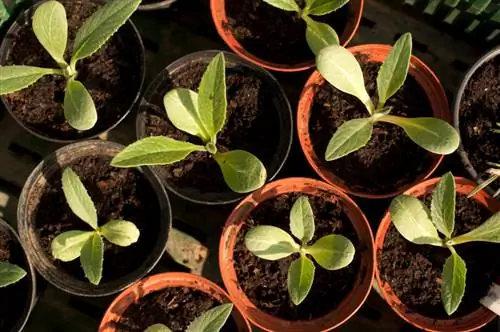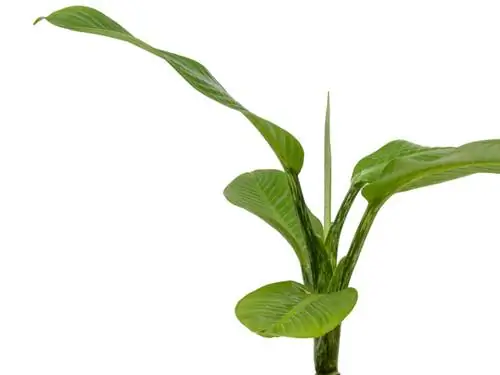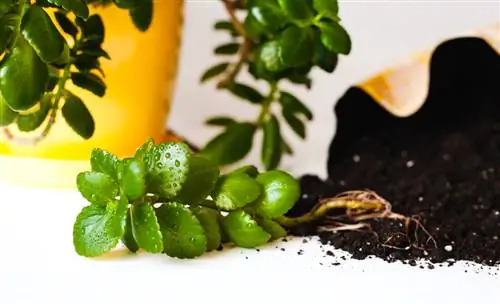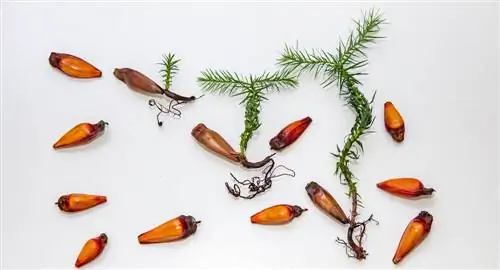- Author admin [email protected].
- Public 2023-12-16 16:46.
- Last modified 2025-01-23 11:20.
There are many reasons to propagate your own garden plants, but it is not always based on the desire for greater plant diversity. Sometimes it's also about rejuvenating older plants and maintaining or stimulating their flowering.
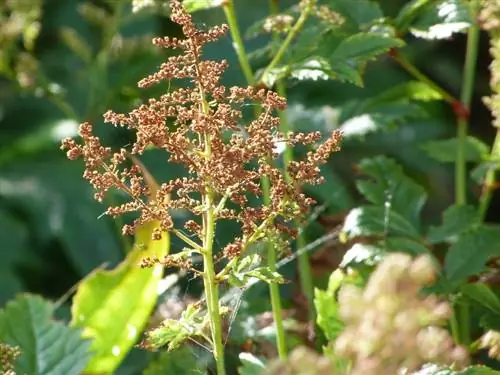
How can you successfully propagate astilbe?
Propagate astilbene by dividing the root ball, cuttings or sowing. Root division promotes flowering and should be carried out every 3-5 years. When planting, compost should be added and sufficient space should be left between plants.
This is also a reason for dividing the root ball with astilbe. You should use this remedy at the latest when the plant only flowers weakly or moderately. Alternatively, you can divide your splendor regularly about every three to five years.
Propagation by sharing
To do this, dig up the root ball of your astilbe, divide it into several parts with the spade and plant them again. The pieces should be at least the size of a fist and the individual roots should, if possible, be undamaged. Add some well-rotted compost to the planting holes so that the new perennials grow well.
The distance between the new plants should be around 40 to 60 cm for tall-growing varieties; for the short varieties, around 20 to 25 cm is sufficient, especially if they are used as ground cover.
Propagation by cuttings
The astilbe reproduces independently through rhizomes. That's why it should be shared occasionally. Otherwise she will age. But you can also use the rhizomes themselves for propagation. But only use the fresh shoots, not those that are already woody.
Cut some strong rhizomes that already have several runners and plant them in the new location. However, they must not be planted too deep in the ground. If you enrich the potting soil with some compost, your cuttings will get enough nutrients.
Sowing Astilbene
Although you can also sow astilbe, growing it is not that easy. During the germination period, the seeds require high humidity and temperatures of 22 - 25 °C. Astilbes are light germinators, but even the seeds cannot tolerate direct sunlight. When the first leaves appear, lower the temperature and humidity.
Some propagation tips:
- Root division promotes flowering
- Light germinator
- Sowing a bit complicated
Tip
If your astilbe no longer blooms beautifully, rejuvenate the perennial by dividing it.


